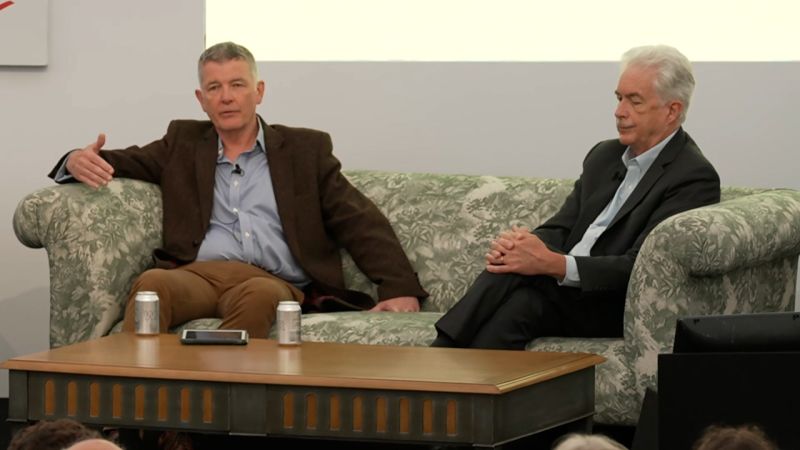In a groundbreaking and unparalleled move, the chiefs of the Central Intelligence Agency (CIA) and the Secret Intelligence Service, best known as MI6, came together for a rare public appearance in London, indicating a unique alliance amid an increasingly complex global security landscape. It marked a transformative shift from the secretive norms of these intelligent agencies, fostering a proactive approach towards tackling striking geopolitical scenarios.
The Central Intelligence Agency’s director William Burns, and MI6’s chief Richard Moore, in an utterly unforeseen act, decided to shun their typically classified lifestyle to address a public gathering. Respectively representing the United States and the United Kingdom, these two are at the helm of intelligence and espionage operations in their countries. Their public appearance was seen as a testament to the deep-rooted alliance between the two nations, with national security being the common thread that binds them together.
Trading their iconic discretion for visibility, the purpose behind this unconventional move can be traced to the need to reiterate the strength of their partnership. Simultaneously, it also stressed a message of unity and combined strength in handling a backdrop loaded with threats from cyber warfare, data privacy concerns, complex geopolitical manoeuvres, and growing terrorist threats.
In his public address, William Burns emphasised the length and breadth of the ongoing challenges facing international security. He delivered profound insights into the dynamics of global security, ranging from digital threats to the alignment of world powers. Particularly interesting was his focus on cyber warfare, which according to him, has radically transformed the domain of national security.
Meanwhile, Richard Moore used this platform to articulate MI6’s pivotal role in preserving national security. His emphasis on their robust collaborative efforts with the CIA highlighted the need for such affiliations in the intelligence community to better combat emerging threats. He positioned the cooperative relationship between the CIA and MI6 as a crucial anchor of stability against the tides of an uncertain world.
Furthermore, the officials expressed concern regarding potential adversaries leveraging technology to disrupt security and stability. As a result, they stressed the importance of both agencies staying ahead of the curve and ensuring their strategies and tactics are equipped not only for the present but also for future security challenges.
Moreover, emerging threats like terrorism and insurgencies were also prominent features of their discourse. The intelligence chiefs emphasized the continued necessity of international intelligence cooperation in both identifying threats and promptly responding to them.
This unprecedented public appearance, thus, served multiple purposes. Primarily, it was a reaffirmation of the enduring partnership between the CIA and MI6, recognising their mutual dependency in an increasingly connected and complex world. Moreover, it was a loud and clear message to potential adversaries that their cooperation transcends conventional norms and paradigms, as they stand united to take on any threat to their national security.
The event has also provided these intelligence organizations an opportunity to build public trust, showcasing their commitment to protecting and preserving their respective nations’ security. As the world grapples with evolving security threats, such exemplifications of inter-agency cooperation and transparency are likely to be a key pillar of international security architecture moving forward. Therefore, this public appearance in London by the heads of CIA and MI6 has set a new precedent in international intelligence collaboration, moulding the pathway towards more open communication and cooperation in these high-stakes circles of global security operations.




